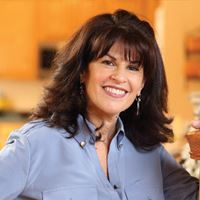 Imagine feeling sweaty all the time, even in bitter winter temperatures. Imagine being unable to hold your spouse’s hand, or taking four showers a day to cool down and feel refreshed. This was Debra Barrow’s nightmare for nearly 56 years.
Imagine feeling sweaty all the time, even in bitter winter temperatures. Imagine being unable to hold your spouse’s hand, or taking four showers a day to cool down and feel refreshed. This was Debra Barrow’s nightmare for nearly 56 years.
Debra, a Monroe Township resident, suffered from excessive sweating—or hyperhidrosis—for as long as she can remember. She recalls not being able to participate in gym class and feeling self-conscious on dates. She also suffered from swelling in her hands and feet, often having to change shoes midday due to the pain.
“As a child, I was always soaking wet,” Debra says. “I felt hot and sweaty all the time. I carried tissues to dry my hands and extra clothes to change.”
About 3 percent of Americans suffer from hyperhidrosis, according to the American Academy of Dermatology. While sweating is a natural mechanism for the body to cool itself, patients with hyperhidrosis sweat excessively, even without physical activity or a rise in temperature. Hyperhidrosis has two types: generalized, when someone sweats all over; and focal, when excessive sweating is contained to a specific area, such as the hands, feet, underarms, face, or scalp.
Debra suffered from several areas of focal hyperhidrosis, with the worst being her hands, feet, and underarms. After suffering from depression, skin infections, and athlete’s foot, Debra, an aesthetician, tried a variety of remedies. These included formaldehyde cream, which made her skin peel, and prescription-strength antiperspirant with high levels of aluminum, which triggered a toxic reaction.
An Innovative Approach
Then Debra read an article about a minimally invasive approach to treating hyperhidrosis using video-assisted thoracic surgery (VATS). She contacted Robert J. Caccavale, MD, a board-certified thoracic surgeon on staff at CentraState, to discuss her options.
“The sympathetic nerve chain is located in the chest, and these nerves control our ‘fight or flight’ response and other involuntary functions, including sweating,” explains Dr. Caccavale. “Endoscopic thoracic sympathectomy, or ETS, is a minimally invasive procedure that interrupts the sympathetic nerve chain to reduce the nerve stimulation that causes excessive sweating.”
During the procedure, Dr. Caccavale and his partner, board-certified thoracic surgeon Jean-Philippe Bocage, MD, insert a thin tube with a camera into the chest through a small incision. The camera allows them to clearly view the sympathetic nerve chain. A second incision provides access for them to divide the sympathetic nerve fibers at the appropriate location. The procedure is performed under general anesthesia and patients return home about two to three hours after surgery.
While the procedure primarily targets hyperhidrosis of the palms, it can also improve feet and underarm hyperhidrosis, according to Dr. Caccavale.
“Having surgery is intense, but I am so happy with the results,” says Debra, who recently vacationed in Mexico with her husband and two adult children without having to hide in the shade. “For the first time, I don’t have to worry about what color clothing and shoes to wear for my son’s wedding. I wish I could have done this years ago.”





